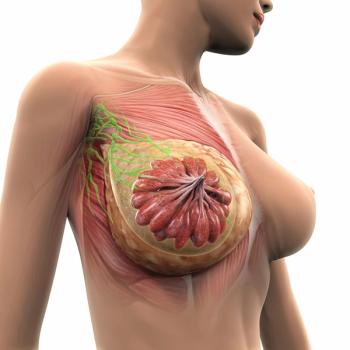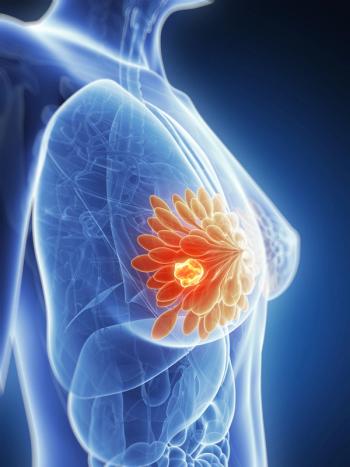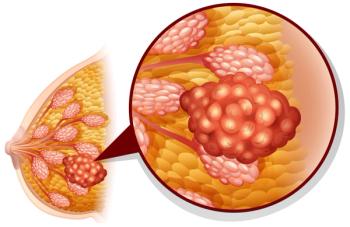
CMG901 Granted Fast Track Designation by FDA in Unresectable or Metastatic Relapsed/Refractory Gastric and GEJ Cancer
Patients with unresectable or metastatic gastric or gastroesophageal junction cancer that is relapsed/refractory following other approved therapies may benefit from treatment with single-agent CMG901, which was granted fast track designation by the FDA.
The FDA has granted fast track designation to single-agent CMG901 as a treatment for patients with unresectable or metastatic gastric and gastroesophageal junction (GEJ) cancer that is has relapsed following or is refractory to other FDA-approved therapies, according to a press release from Keymed Biosciences.1
CMG901 received orphan drug designation in April 2022 for patients with advanced solid tumors, including gastric cancer, GEJ cancer, and pancreatic cancer.2 The Claudin 18.2–targeted agent is the first drug in its class to receive this designation. The phase 1 study is assessing the safety, tolerability, pharmacokinetic profile, and preliminary efficacy of the monotherapy.
“The ongoing phase 1 [NCT04805307] trial of CMG901 demonstrated promising antitumor activity in advanced gastric and GEJ adenocarcinoma patients,” Joy Yan, MD, PhD, chief medical officer at Keymed Biosciences, said in a press release. “We look forward to working closely with the FDA to finish the design of the global pivotal trial in Claudin 18.2-positive advanced gastric and GEJ adenocarcinoma.”
CMG901 consists of a monoclonal antibody targeting Claudin 18.2, a cleavable linker, and a cytotoxic payload. In particular, investigators have recognized Claudin 18.2 as a highly selective molecule that is broadly expressed across several tumor types, including gastric and pancreatic cancer. Based on this, Claudin 18.2 could be a promising marker for the development of targeted therapies.
The dose-escalation portion of the phase 1 trial is nearing completion in China and the dose-expansion portion is expected to start in Q2 of 2022.
The study has an estimated enrollment of 162 patients. In the dose-escalation portion of the study, CMG901 will be administered intravenously once every 3 weeks, and dose escalation will be performed using a 3 + 3 design. The first 2 dose levels are 0.3 mg/kg and 0.6 mg/kg, with subsequent doses including 1.2 mg/kg, 1.8 mg/kg, 2.2 mg/kg, 2.6 mg/kg, and 3.0 mg/kg.
The study’s primary outcomes are dose-limiting toxicities, incidence of severe adverse effects, objective response rate, and recommended phase 2 dose. Secondary end points include disease control rate, duration of response, progression-free survival, and overall survival.
To be eligible for part A of the study, patients are required to have histologically or cytologically confirmed advanced and/or metastatic disease with no other effective or available treatment options. Archival tumor specimens or fresh biopsies are also required. In part B, patients need to have measurable disease by RECIST v1.1 criteria and have an ECOG performance status of 0 or 1.
References
- FDA granted CMG901 fast track designation for unresectable or metastatic gastric and gastroesophageal junction cancer which have relapsed and/or are refractory to approved therapies. News release. Keymed Biosciences. April 19, 2022. Accessed April 27, 2022. https://prn.to/38nHEpz
- CMG901 for the treatment of gastric cancer and gastroesophageal junction adenocarcinoma was granted the Orphan-drug Designation by the Food and Drug Administration of the United States. News release. Keymed Biosciences. April 12, 2022. Accessed April 27, 2022. https://prn.to/3F0e1qI
Newsletter
Stay up to date on recent advances in the multidisciplinary approach to cancer.





















































































